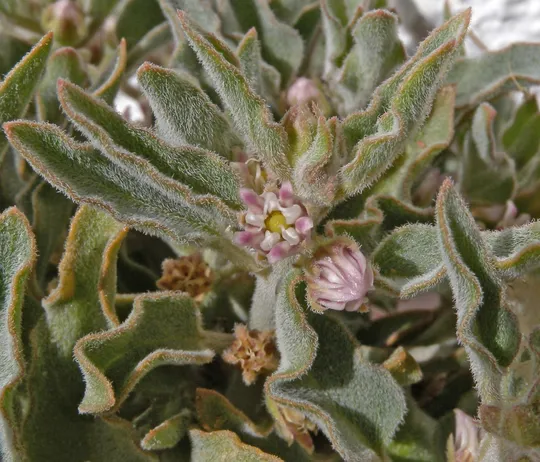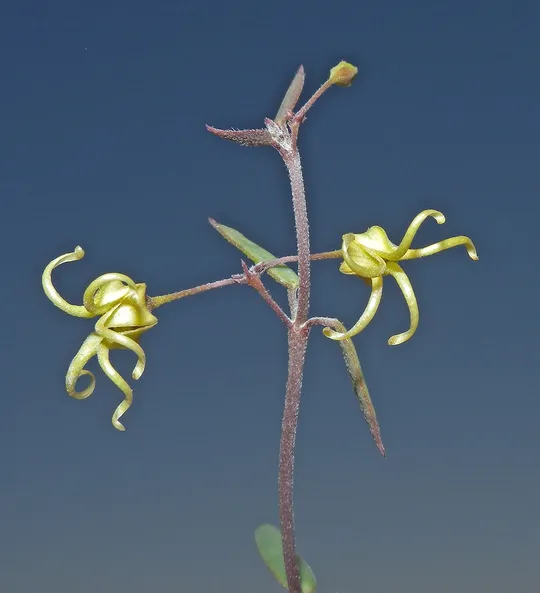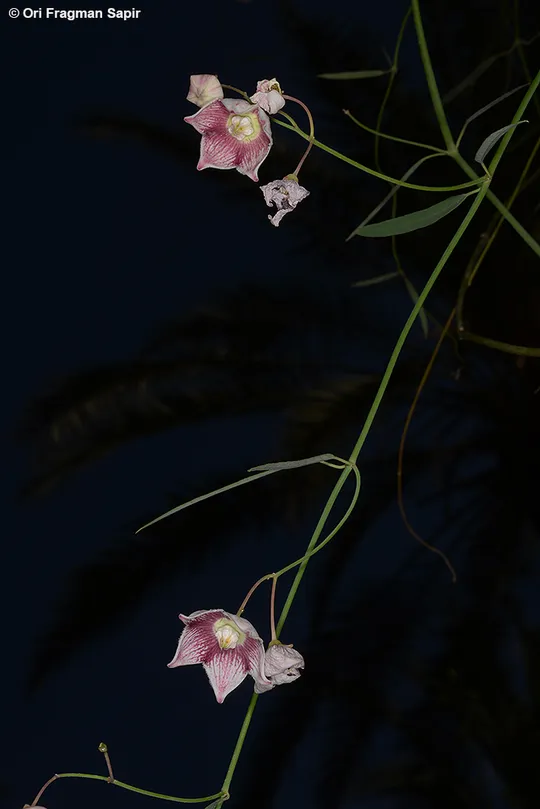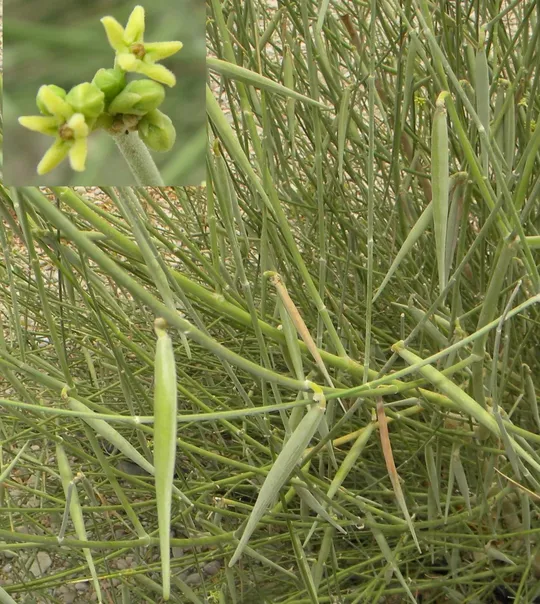Greek Silk Vine
Periploca graeca
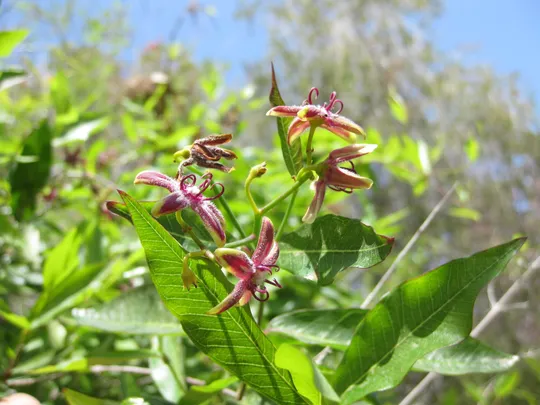
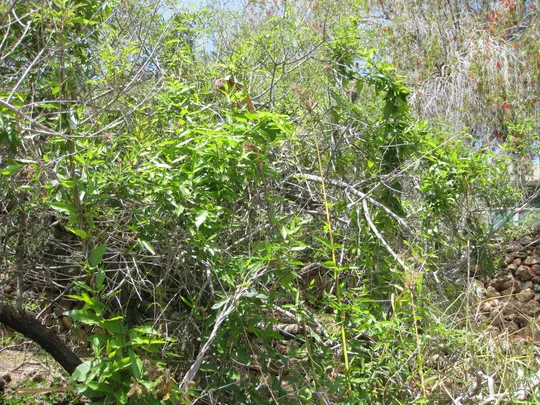
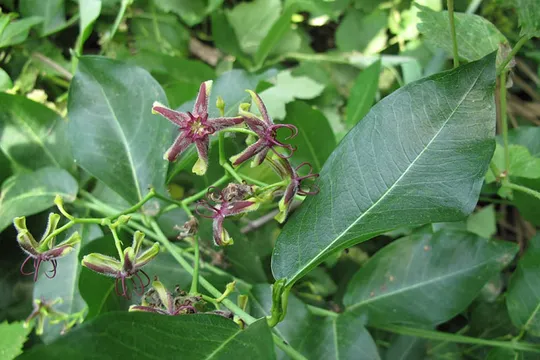
Periploca graeca
is a common ornamental plant in
Western Europe. Leather tanning materials
are produced from its bark and the glycoside, periplocin, a weak cardiac
stimulant, is produced from its stems. It is also used for firewood and
its foliage is used for grazing.
Periploca graeca grows only in
the Hula Valley region in the Dan Valley along the Snir (Hatsbani) and Hermon (Banias) streams. Six sites are currently known, mostly in the Snir Stream north of Highway 99 up to the border. In the Hermon Stream, there is one site close to spring and another
site near Sde Nehamya at the
meeting point of the Hermon, Dan and Snir streams. The site at the Banias Plateau can be considered as being part of the Golan Heights
region, i.e. the plant officially grows in two regions.
Periploca graeca is a climbing plant that grows at the edge of fast flowing rivers. Browicz (1982-1996) stresses that the plant is found at its optimal abundance and condition in the Black Sea countries, where humidity is high and the soil rich. Particularly large populations are located at the entrance to rivers in the northern Black Sea, where P. graeca contributes to the density of the jungle-like forest, rich in climbing vines.
The genus Periploca has 11 species, found in the Mediterranean, Euro-Siberian,
West Asian and tropical regions of
Africa and Asia. Most of the Asclepiadaceae genera are tropical,
but Periploca is among
the only genera that has representatives
growing in the temperate zone (as does the genus Cynanchum). In Israel, there are two species: P. graeca, which is a
northern species, and P. aphylla, which is an extreme desert Sudanian plant.
The species of the genus Periploca and
the Asclepiadaceae family in general, are
known for their long-range dispersal ability. Therefore, we would expect P. graeca
sites to be far apart and
exhibit extinction and establishment dynamics. This is not true for P. graeca; it apparently needs high relative humidity and fast flowing river margins, a very
rare habitat in the Levant. Moreover, its distribution pattern suggests
vigorous vegetative reproduction, as found in many other stream banks plants
•
All six Periploca graeca sites extend
over two geographically
adjacent segments along the Hermon and Snir streams in the Dan Valley in northern Israel. The species is absent along the Dan Stream, which is located between the two of them.
•
Five of the six sites are included in nature reserves, but
nevertheless, active recreational activities take place on both streams that
are reserves.
•
The habitat suffered from damage not caused by
humans, devastation by floods in the streams that change the landscape and uproot vegetation along
the streams banks, including
large Platanus trees and the Periploca graeca vines climbing on them.
•
No plant survey was conducted in the Hula Valley,
and therefore there is no information on the rate of population extinction. According
to
Mike Livneh, there has probably been no change in the number of sites and the size of the populations since the 1960s.
A thorough survey should be conducted and the Periploca graeca plants in
the Hula Valley should be counted (very difficult with
climbing plants). The two populations in the Snir and Hermon streams should
be monitored, if possible, under different hydrological conditions.
Periploca graeca
is a northern plant with a relatively broad distribution, from Italy
to Iran. The species is very
common in
the Balkans and around the Black Sea countries. It grows in Romania and Ukraine, and is very common in all the Caucasus
and Caspian Sea coast countries. In Iran and Iraq, P. graeca is found only in the north, and it is absent from Syria. In Turkey it grows in the rivers that
flow through the mountain ranges towards the sea in all
the coastal areas, and penetrates into the Anatolian Plateau only in the
north and east. In the entire Levant, it grows only in
Lebanon, where it is common along rivers. The Flora Palaestina has a record of P. graeca
from Moab. Browicz (1966) questions the validity of the information, therefore it has been included the
red table as a northern peripheral plant.
Periploca graeca is a northern woody climber, which reaches the northern limit of its global distribution in the Dan Valley. It grows on a very small number of sites, all of which
are located in
the same section, a fact that increases the threat of extinction.
Browicz, K. 1966, The Genus Periploca L. Arboreum Kornickie 11:
5-104
Current Occupancy Map
| 1000 squre meter pixel | 5000 squre meter pixel | 10000 squre meter pixel | |
|---|---|---|---|
| number of observations | 0 | 0 | 0 |
| in total pixels | 0 | 0 | 0 |
| Family | Asclepiadaceae |
| Classification | On the endangered species list |
| Ecosystem | Mediterranean humid |
| Chorotype | Euro – Siberian (Mediterranean and Western Irano – Turanian) |
| Conservation Site | Snir Stream (Hatsbani) and Hermon Stream (Banias) |
| Rarity |
1
3
6
|
|---|---|
| Vulnerability |
0
4
4
|
| Attractiveness |
0
1
4
|
| Endemism |
0
0
4
|
| Red number |
1
4.7
10
|
| Peripherality | N |
| IUCN category | DD EW EX LC CR EN VU NT |
| Threat Definition according to the red book | Endangered |
 Participated:
Participated:
